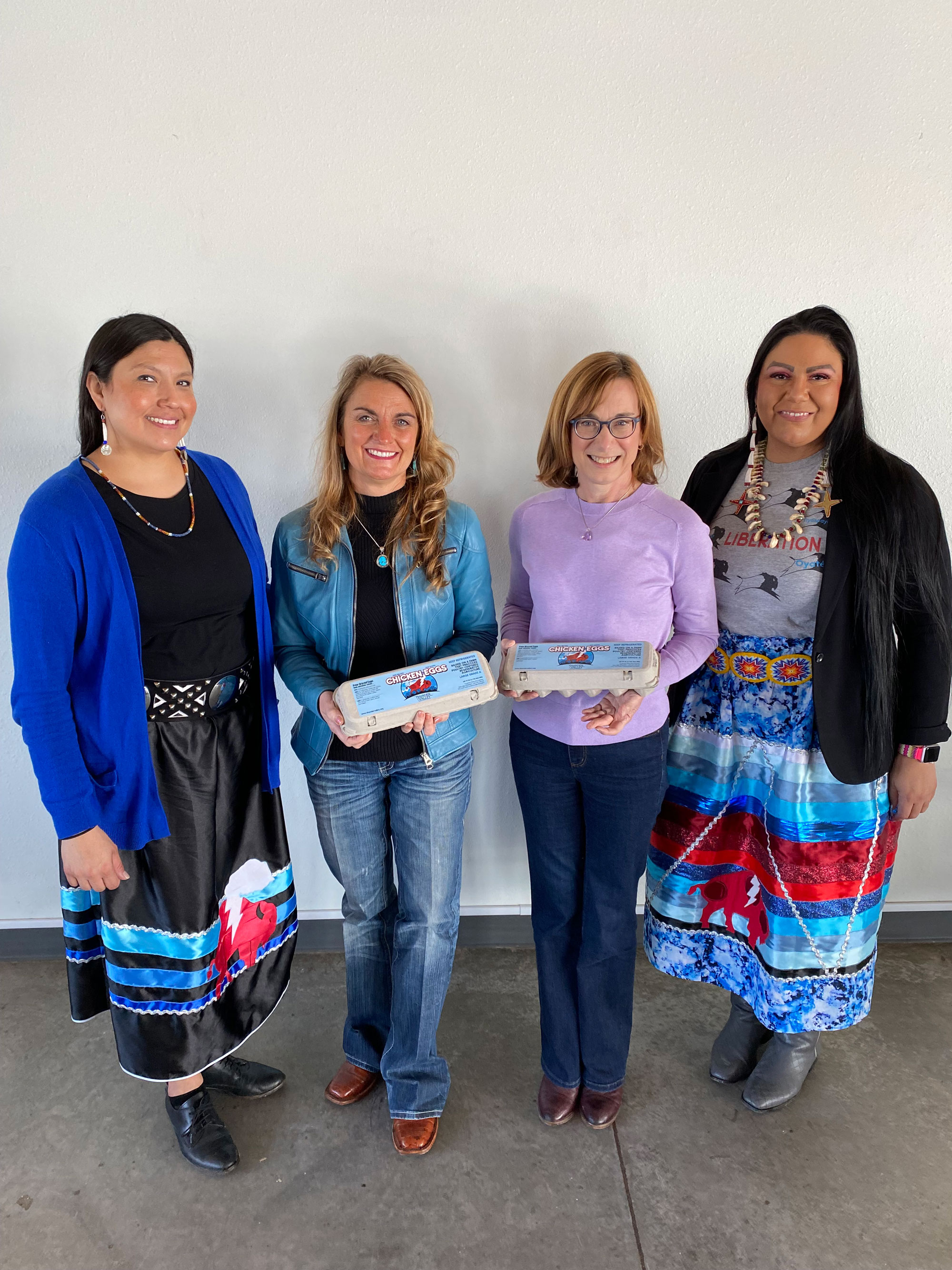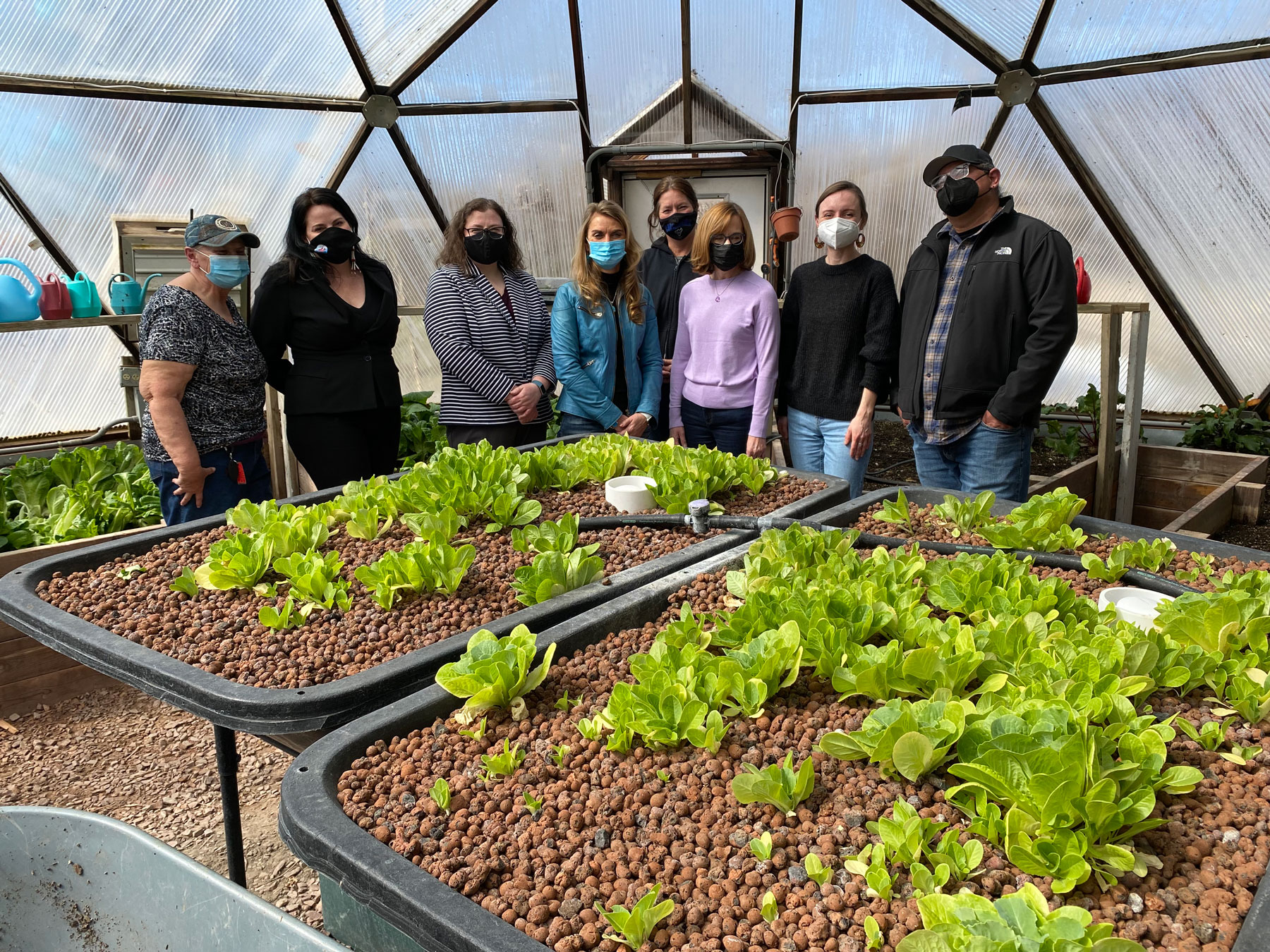
(left to right) Thunder Valley Executive Director Tatewin Means, FNS Mountain Plains Regional Administrator Cheryl Kennedy, FNS Administrator Cindy Long and Thunder Valley Deputy Director Lynn Cuny display fresh eggs from the Thunder Valley chicken coop.
By Cindy Long, Administrator, Food and Nutrition Service
When applying an equity lens to nutrition programs, it is essential for policymakers to orient themselves toward the perspective of all communities they serve. We must actively take the time to see and listen to truly understand historical inequities that exist, so that we may be better positioned to address them.
I am grateful to the Oglala Sioux Tribe for recently welcoming me to visit their land to learn from their tribal members. This spring, I traveled to Pine Ridge Reservation to gain a hands-on understanding of tribal food sovereignty efforts and how USDA programs play a supporting role.
The Pine Ridge food system consists of a network of tremendous assets, from grassroots movements to revive traditional foods such as bison and wild timpsila (prairie turnips), to more modern crops and season-extending agriculture techniques.
These two approaches combine in harmony through the work of Thunder Valley Community Development Corporation, where wild chokecherry trees are being cultivated adjacent to a chicken coop and a geothermal greenhouse, providing eggs and produce to the community.
The Red Cloud Indian School is making similar strides, building youth capacity through USDA’s Farm to School Grant Program. Student interns maintain cropland and a greenhouse operation to produce food and their teach peers about food sovereignty.

USDA officials tour the greenhouse at Red Cloud Indian School in Pine Ridge. The school operates the greenhouse as part of the USDA Farm to School Program.
In a remote area like Pine Ridge, access to healthy foods can be a barrier to nutrition security, but USDA programs support tribal efforts to reach all members. The Food Distribution Program on Indian Reservations (FDPIR) provides commodity foods for participants at the warehouse in Pine Ridge and offers tailgate deliveries to communities on the reservation.
And through a cooperative agreement, USDA is funding a pilot project to test online ordering for WIC participants from the Buche Foods grocery store in Pine Ridge.
My visit to the Pine Ridge Reservation concluded with dinner and storytelling with leaders from the Wakpamni Lake Community, whose geothermal greenhouse produces nutrient-rich micro-greens.
When we take time to listen and learn from each other, we can effectively partner to put nutrition security within reach for all and move us ever closer to more equitable food systems.

